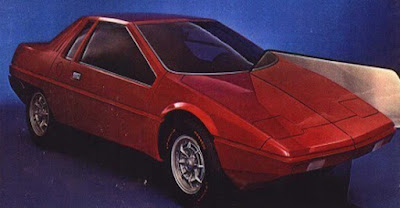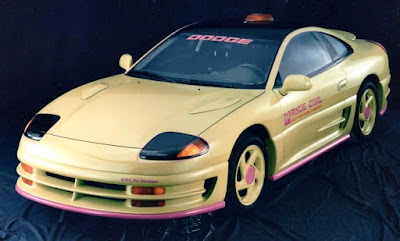The Faster - The world of hypercars has always been filled with awe-inspiring innovations, and the upcoming McLaren W1 is poised to make a significant mark. The very name W1 might evoke memories of the Australian-made HSV GTSR W1, known for its dominance in power and performance, but this new creation from McLaren stands in a league of its own. Building upon the legacy of iconic models like the McLaren P1 and the legendary F1, this latest addition promises a thrilling chapter in automotive history.
 |
| The
McLaren W1 embodies cutting-edge technology and racing heritage, with
its name signifying the brand's championship-winning mindset in Formula
One, celebrating the precision and performance that have defined McLaren
for decades. (Picture from: KabarMegapolitan) |
At the heart of the McLaren W1 is a focus on cutting-edge technology and racing heritage. While the W1 name might suggest a connection to the Australian powerhouse, it is not a homage to the HSV GTSR W1. Instead, McLaren’s choice of the name signifies their championship-winning mindset in Formula One, celebrating the precision and performance that have defined the brand for decades. The McLaren W1 represents a blend of speed, innovation, and world-class engineering, positioning it as the next hypercar to watch.
 |
| While teaser details of the McLaren W1 remain limited, the vehicle is expected to surpass its predecessors in every way. (Picture from: TheSupercarBlog) |
Though specific details of the McLaren W1 remain limited, the vehicle is expected to surpass its predecessors in every way. Under the hood, this hypercar is rumored to feature a brand-new V8 engine, paired with a highly advanced hybrid system. This combination is projected to produce around 1,200 horsepower—significantly more than the 735kW output of the P1 and leagues ahead of the 474kW GTSR W1. The inclusion of a hybrid system, said to be 70% lighter than McLaren’s current offering, shows the brand’s commitment to pushing the boundaries of both performance and efficiency.
 |
| Although the W1 name might suggest a connection to the Australian powerhouse, it is not a homage to the HSV GTSR W1, but rather reflects McLaren’s championship-winning mindset in Formula One. (Picture from: HSV) |
The McLaren W1 is set to follow the plug-in hybrid path, much like its sibling, the V6-powered Artura. However, this model will draw from the expertise of McLaren’s Formula One division, utilizing battery technology derived from their F1 cars. The combination of a powerful engine and lightweight hybrid system could redefine expectations for what a hypercar can achieve. Additionally, only 400 units of the McLaren W1 are expected to be produced, making it a highly exclusive vehicle—though still more accessible than the extremely limited run of the HSV GTSR W1.
One of the most exciting aspects of the McLaren W1 is its pricing and availability. With reports suggesting a starting price of approximately $2 million, this hypercar is clearly targeting a very exclusive market. However, McLaren dealers have indicated that the 25 fortunate owners of the track-only Solus GT will have the first opportunity to secure a W1. Such limited production and high price point ensure that the McLaren W1 will become a coveted gem among automotive enthusiasts and collectors alike.
 |
| The McLaren W1, an upcoming creation from McLaren, builds upon the legacy of iconic models like the P1 and legendary F1, standing in a league of its own and promising a thrilling chapter in automotive history. (Picture from: CarsUK.net) |
Beyond its remarkable powertrain, the design of the McLaren W1 is set to be a showstopper. Early glimpses from those who have seen the car reveal a number of striking features. One of the most notable changes is the switch from McLaren’s signature butterfly doors to a top-hinged gull-wing design, reminiscent of the classic DeLorean DMC-12 and Mercedes-Benz 300SL. This bold shift in design direction is just one example of how McLaren is blending its own heritage with a nod to automotive icons of the past.
Other standout design elements include a hydraulically activated rear wing, titanium twin exhaust outlets mounted centrally, and aerodynamic 'snorkels' behind the side windows. The W1 also boasts an active front splitter, unique 'socket-eye' headlights, and floating wheel arches. Side skirts that pay homage to Formula One aero elements and a full-width carbon diffuser further enhance the car’s performance and aesthetics. It’s clear that every inch of this car has been meticulously crafted with both form and function in mind.
The McLaren W1 will officially be unveiled on October 6, 2024, a significant date that coincides with the 50th anniversary of McLaren’s first Formula One World Constructors' Championship. This momentous occasion will not only mark the reveal of a groundbreaking hypercar but also celebrate McLaren’s enduring legacy in motorsports, a legacy defined by visionaries like Emerson Fittipaldi, who brought home the World Drivers' Championship in 1974.
 With so much anticipation surrounding the McLaren W1, it’s clear that this hypercar is set to elevate the brand’s reputation even further. Whether you’re a fan of McLaren’s rich Formula One history or simply an admirer of high-performance vehicles, the W1 is a model that promises to capture imaginations and leave a lasting impact on the automotive world. *** [EKA | FROM VARIOUS SOURCES | MCLAREN | ROBBREPORT | CARSCOOPS | CARSUK.NET | THESUPERCARBLOG ]
With so much anticipation surrounding the McLaren W1, it’s clear that this hypercar is set to elevate the brand’s reputation even further. Whether you’re a fan of McLaren’s rich Formula One history or simply an admirer of high-performance vehicles, the W1 is a model that promises to capture imaginations and leave a lasting impact on the automotive world. *** [EKA | FROM VARIOUS SOURCES | MCLAREN | ROBBREPORT | CARSCOOPS | CARSUK.NET | THESUPERCARBLOG ]Note: This blog can be accessed via your smart phone.





































